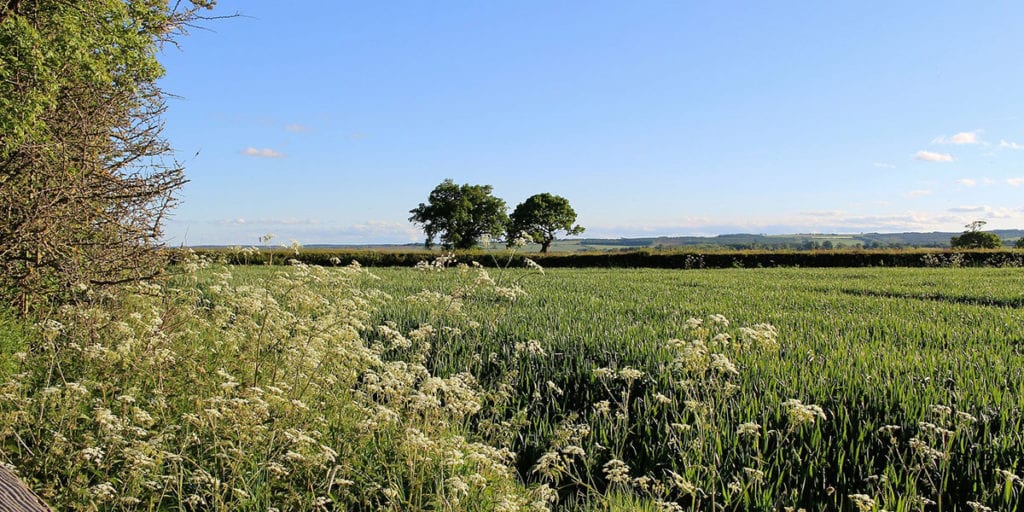Mission permission

Tom Payne
Many of us rely on the kind permission of landowners, farmers and gamekeepers to enjoy our sporting pastimes. Tom Payne shares his advice on how to secure your own – and how to keep hold of it.
I’m often asked: “How do you go about gaining shooting permissions?”
Shooting permission is precious, difficult to obtain and very easy to lose. Whether it’s pigeon shooting with a shotgun or ratting and rabbiting with an airgun, many of the same principles apply when it comes to securing your own permission.
Generally, experience, a professional attitude and proving oneself as trustworthy and respectful are key. If you tick these boxes, you may even find that landowners call you.
Most of the time, however, it will be a case of approaching farmers about pest and predator control on their land. Below I outline my approach to securing pigeon shooting which I have found to work well.
Many of the suggestions will be just as relevant to those targeting other quarry species such as corvids, rodents and rabbits. Indeed, one type of permission may be the pathway to another.
The time of year
I find winter the best time to approach a landowner. Being a fair-weather shooter and only turning up to shoot problem species in the warmer months doesn’t help the farmers out. A flock of 3,000 pigeons, for example, will cause huge damage to a crop of winter rape; it is important that you show that you are willing through the entire year, and not just during the easy months.
Also a good time to visit is when you have seen a particular crop being hammered on your travels; I’m always on the lookout for pigeons when I’m driving around the countryside.
Do your research
If you find ground with a pest problem, your first step should be to identify exactly where you are, the crop (where applicable), the farm and the name of the farmer. I will never approach a landowner if I do not have this information. Getting it wrong demonstrates a lack of knowledge and experience.
This of course doesn’t mean you should drive into every farmyard in the vicinity trying your luck – there are better ways to find information. The people who work in a local pub, post office or shop will normally be able to help. It’s important to be polite and discreet; word travels fast in rural Britain!
The visit
I prefer to visit landowners in person rather than call on the phone. Few people like getting cold calls from strangers.
Farmers, landowners and gamekeepers are busy people, so timing is vital. Avoid rocking up during their moments of rest; lunch times and evenings are to be avoided, as are Sundays. I find late morning on a weekday is best. If the farmer looks busy when you arrive, go back another day.
Crucially, do not ever expect to just turn up, ask for permission and then head off to shoot. Arriving clad in camo with all your kit in the car doesn’t look good. Dress cleanly and smartly and you will come across as less presumptuous and far more professional.

The important details
When you approach the farmer, be confident, polite and clear. Explain who you are and where you are from. If you have permission elsewhere, especially in the same area, this can be of benefit; most farmers will know their neighbours and a positive reference will be of great advantage.
Explain exactly where you have seen the problem. You can almost guarantee farmers will be fully aware of an airborne army devouring their crops, or a plague of rabbits digging hazardous holes in grazing pasture.
It goes without saying that the farmer’s decision must be fully respected. If it’s a no then be polite, leave your details in case the situation changes, and thank them for their time. If the answer is yes, then it’s time to swap information.
Permission granted
It is vital that you completely understand and respect any rules laid down by the land owner or manager.
A useful starting point is to ask for an up-to-date map of the area you are shooting over – never assume that permission granted to shoot on one field automatically extends to the rest of the farm or estate.
On a map you can locate any rights of way, establish boundaries and identify no-go or sensitive areas and where you can and cannot drive. Later you may also be able to go through any cropping plans with the farmer, which will aid your reconnaissance.
A list of relevant contact details is also useful – such as the keeper if there is one. I always notify the permission giver a couple of days before shooting and call or message to say when I have left.
Remember
Always treat the ground and the farmer with the utmost respect, be safe, and leave the ground how it was when you arrived.
The ‘permission pack’
I always supply a pack of information about me. Not only does this show professionalism, it also gives people confidence in your suitability to be on their land with a shotgun or firearm.
This includes:
- A copy of my shotgun certificate
- Insurance details – a BASC membership card is ideal.
- Vehicle info – in case farmers get a call about a suspicious vehicle.
- Personal contact details
